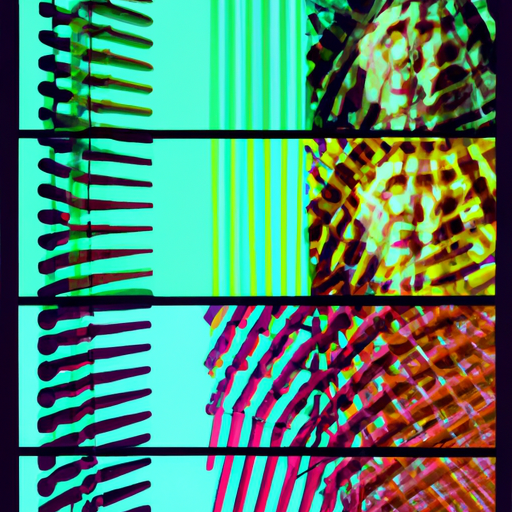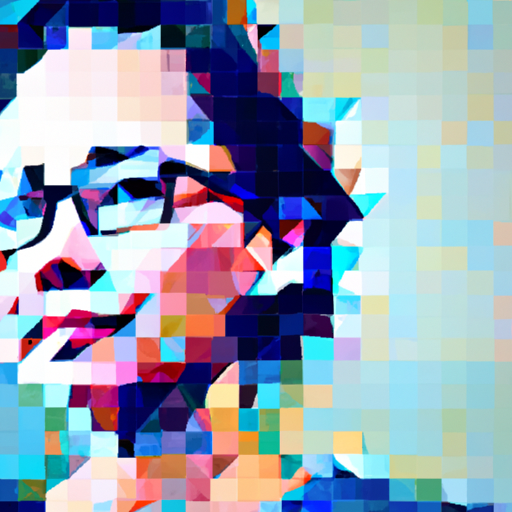
-
Table of Contents
Generative Art’s Influence on Design

Generative art, a form of art that is created using algorithms and computer programming, has been making waves in the design world. With its ability to produce unique and unpredictable outcomes, generative art has become a powerful tool for designers to create innovative and visually stunning designs. In this article, we will explore the influence of generative art on design and how it is shaping the future of the industry.
The Rise of Generative Art
Generative art has been around for decades, but it has gained significant popularity in recent years. With advancements in technology and the accessibility of programming tools, designers are now able to create complex and intricate generative art pieces with ease. This has opened up new possibilities for designers to explore and experiment with different forms, shapes, and patterns.
One of the reasons for the rise of generative art is its ability to create unique and personalized designs. Unlike traditional art forms, which often rely on the artist’s subjective interpretation, generative art is driven by algorithms and data. This means that each piece of generative art is inherently different and can be customized to suit individual preferences.
Breaking the Boundaries of Design
Generative art has the power to break the boundaries of traditional design. By using algorithms to generate designs, designers can create complex and intricate patterns that would be impossible to achieve manually. This opens up new possibilities for designers to explore and experiment with different forms, shapes, and patterns.
For example, in the field of graphic design, generative art can be used to create unique and eye-catching logos, posters, and advertisements. By using algorithms to generate designs, designers can create visually stunning and attention-grabbing visuals that stand out from the crowd.
Generative art is also making its mark in the world of product design. By using algorithms to generate designs, designers can create products that are not only aesthetically pleasing but also functional and innovative. For example, generative design algorithms can be used to create lightweight and structurally efficient 3D-printed objects.
Enhancing User Experience
Generative art is not only about creating visually stunning designs; it can also enhance the user experience. By using algorithms to generate designs, designers can create interactive and dynamic experiences that engage and captivate users.
For example, in the field of web design, generative art can be used to create interactive and dynamic websites. By using algorithms to generate designs, designers can create websites that respond to user input and adapt to different screen sizes and devices. This creates a more engaging and personalized user experience.
Generative art can also be used to create immersive and interactive installations. By using algorithms to generate designs, designers can create installations that respond to user movements and interactions. This creates a unique and memorable experience for users.
Case Studies
Several case studies demonstrate the impact of generative art on design. One notable example is the work of Nervous System, a design studio that uses generative algorithms to create unique and customizable jewelry. By using algorithms to generate designs, Nervous System is able to create intricate and personalized jewelry pieces that are tailored to individual preferences.
Another example is the work of Joshua Davis, a renowned generative artist. Davis uses algorithms to generate designs that are then printed onto various mediums, including canvas and clothing. His work has been exhibited in galleries around the world and has received critical acclaim for its innovative and visually stunning designs.
The Future of Design
Generative art is undoubtedly shaping the future of design. With its ability to create unique and personalized designs, break the boundaries of traditional design, and enhance the user experience, generative art is revolutionizing the way designers approach their work.
In the future, we can expect to see more designers incorporating generative art into their design processes. As technology continues to advance, designers will have access to more powerful tools and algorithms, allowing them to push the boundaries of what is possible in design.
Key Takeaways
- Generative art is a form of art created using algorithms and computer programming.
- Generative art has gained popularity in recent years due to advancements in technology and accessibility of programming tools.
- Generative art breaks the boundaries of traditional design by creating unique and personalized designs.
- Generative art enhances the user experience by creating interactive and dynamic designs.
- Case studies, such as Nervous System and Joshua Davis, demonstrate the impact of generative art on design.
- Generative art is shaping the future of design by revolutionizing the design process and pushing the boundaries of what is possible.
Conclusion
Generative art’s influence on design cannot be understated. With its ability to create unique and personalized designs, break the boundaries of traditional design, and enhance the user experience, generative art is revolutionizing the way designers approach their work. As technology continues to advance, we can expect to see more designers incorporating generative art into their design processes, pushing the boundaries of what is possible in design. The future of design is undoubtedly generative, and it is an exciting time to be a designer.
